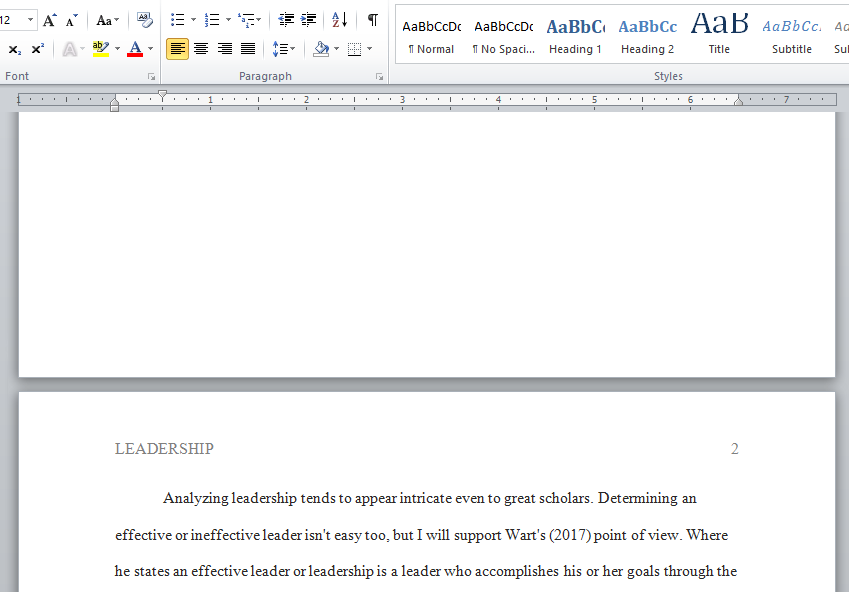How do we know when a leader is being effective (or ineffective)?
How do we know when a leader is being effective (or ineffective)? Please provide an example.
BELOW IS AN EXAMPLE FROM ANOTHER STUDENT FOR THIS POST. SHE SHARED THE PAGES OF THE BOOK WITH ME AND SENT HER POST AS A GUIDE.
I initially thought to establish between the effective and ineffective leader, I must identify the traits, skills and actions [behavior] that determines if a leader is being effective or ineffective. At the beginning of Chapter 9: Traits that Contribute to Leader Effectiveness Van Wart wrote, “possession of certain traits and skills is an indicator of effectiveness; behaviors are the (present or past) indicators of the effective use of traits and skills in organizational contexts” (2017, p. 246). However, after reading Chapter 8 and 9, I have concluded that effectiveness is measured by achieving results consistently.
The reading goes on to discuss ten traits that includes 6 personality traits, two motivational drives and two value orientations, that are general traits in most adults (Van Wart, 2017, p.247). To achieve consistent results, every leader must make the choice (select traits) to be successful [produce consistent results]. The reading has informed us repeatedly that there is no list, or specific traits to be a leader and any variation or combination of leadership styles can produce success. However, specific styles create specific results when consistently used that can be effective, or ineffective for specific instances and vice versa.
Being an effective or ineffective leader is all about getting results, in Chapter 1 we were introduced to personal and position power, and Chapter 7 helped to connect our understanding of the uses of power in leadership and what is a leader.
Effective leaders make the choice to be democratic and participative, creating a two-way line of communication that empowers their following to accomplish results. While an ineffective leader is autocratic and dictatorial, creating a one-way line of communication consisting of the passing of information and the expectation of work without mutual interaction or two-way cooperation.
For example, I currently do independent contracting for an individual that started a behavioral health center in mid-2019. While she is a knowledgeable therapist, she is not privy to the task of running the day to day operations. Instead of following guidelines provided by the third-party payors she consistently required processes that were not conducive to sustaining the business she called “baby.” Additionally, she was not equipped to handle staff changes, or hire/fire appropriately. It wasn’t until she failed the very first audit that she realized that position power is useless when you’re only taking the role of the hammer. Not being transparent, not building rapport through respect, and not creating a mutual relationship with employees provided the opportunity for problems to become challenges instead of opportunity for correction and change.
Van Wart, M. (2017). Leadership in public organizations: An introduction (3rd ed.). New York. Routledge.
Answer preview :

Word limit : 295
